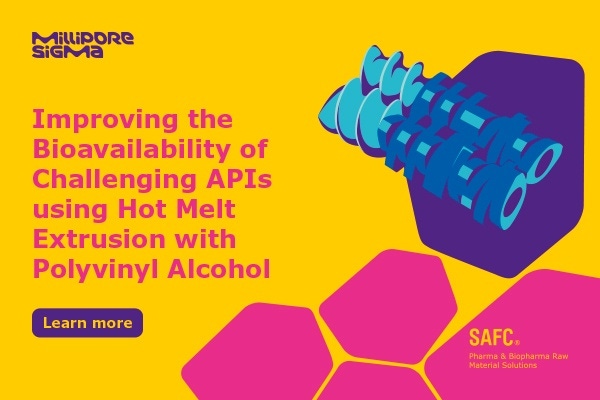Voices of Biotech
Podcast: MilliporeSigma says education vital to creating unbreakable chain for sustainability
MilliporeSigma discusses the importance of people, education, and the benefits of embracing discomfort to bolster sustainability efforts.
June 8, 2021

Sponsored by Millipore Sigma
New molecular entities (NMEs) are becoming larger, more crystalline and more lipophilic and, as a result, less soluble. While approximately 40% of active pharmaceutical ingredients (APIs) currently on the market show poor solubility, it is estimated that between 60 and 90% of compounds in development have solubility challenges.1,2 For an oral formulation, API solubility and permeability are critical factors for absorption in the gastrointestinal tract. As a result of this, solubility-enhancing formulation techniques have become an area of focus for pharmaceutical formulators. One approach is to alter the solid-state of the compound from the crystalline to the amorphous form. The amorphous form, in contrast to the more commonly observed crystalline form, is more soluble due to weaker interactions holding the molecules together in the solid state. However, the amorphous form must be stabilized to prevent re-crystallization back to the crystalline form, which is the thermodynamically preferred state. There are various methods to stabilize the amorphous form, with the most common being immobilization in a polymeric matrix, also referred to as polymeric amorphous solid dispersion. This white paper will focus on the use of hot melt extrusion (HME) for this purpose and will outline the unique benefits of polyvinyl alcohol in stabilizing high melting point molecules in the more soluble amorphous form.
You May Also Like